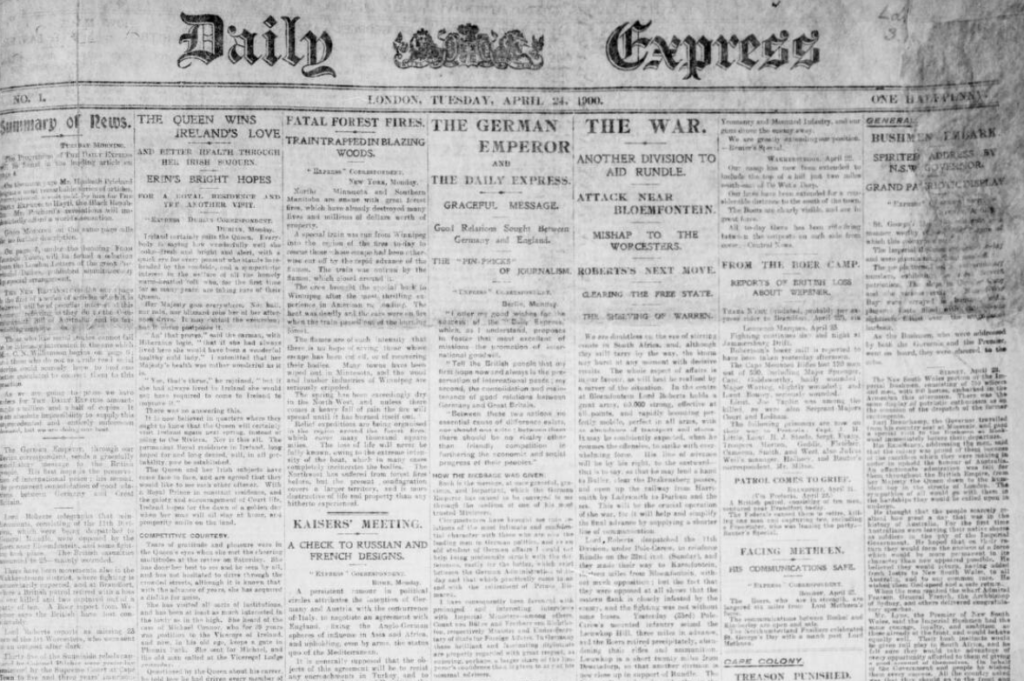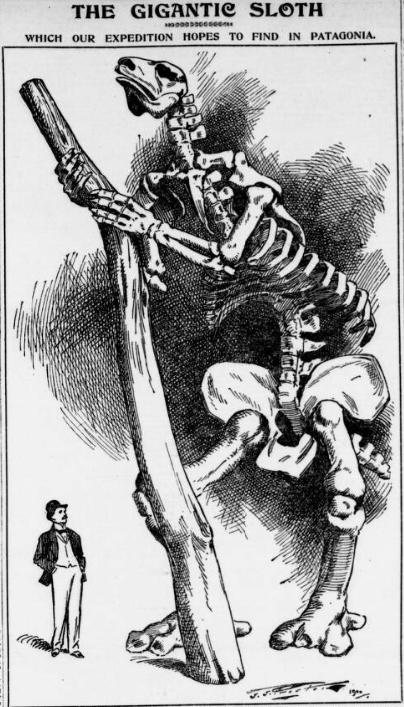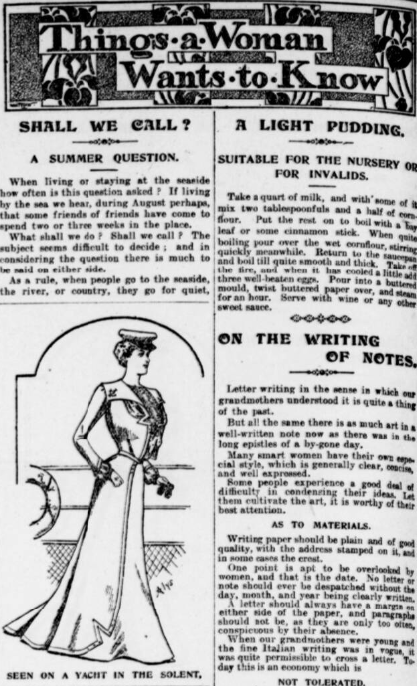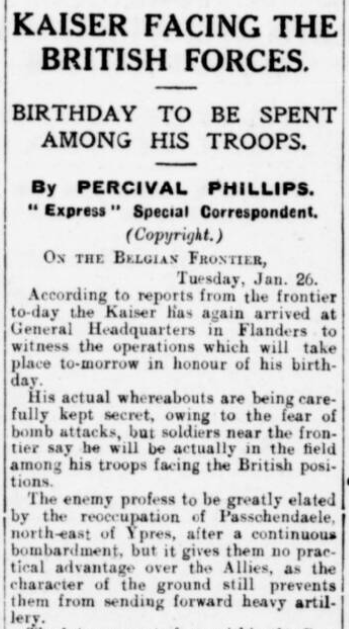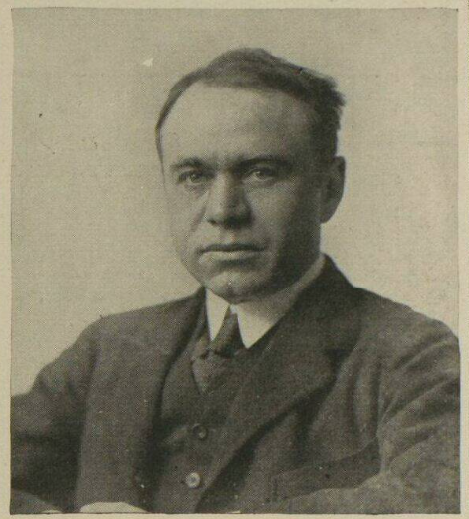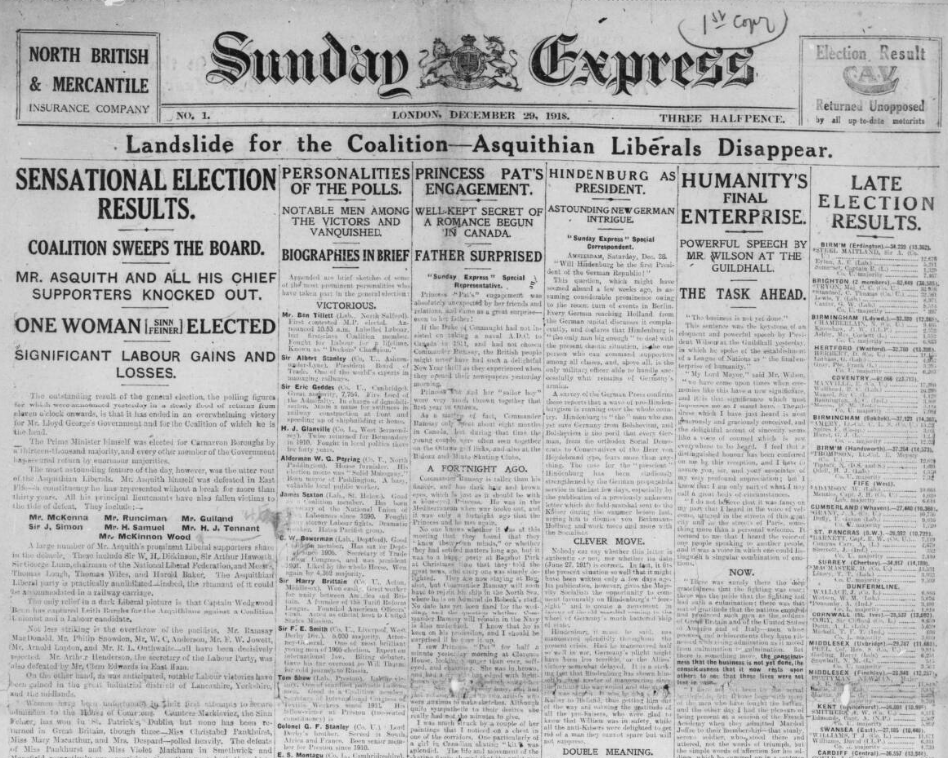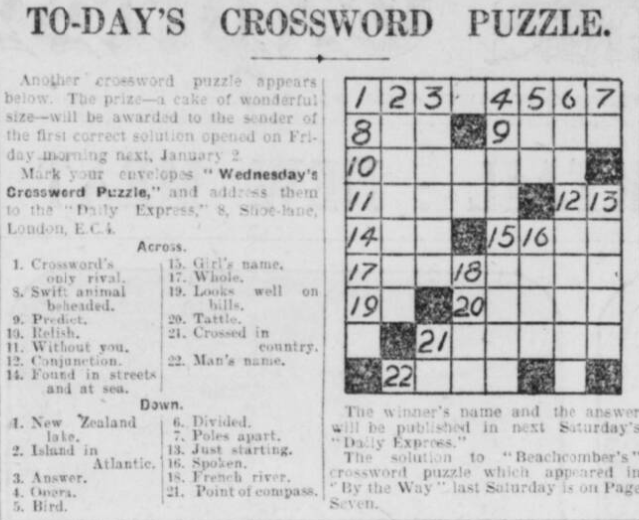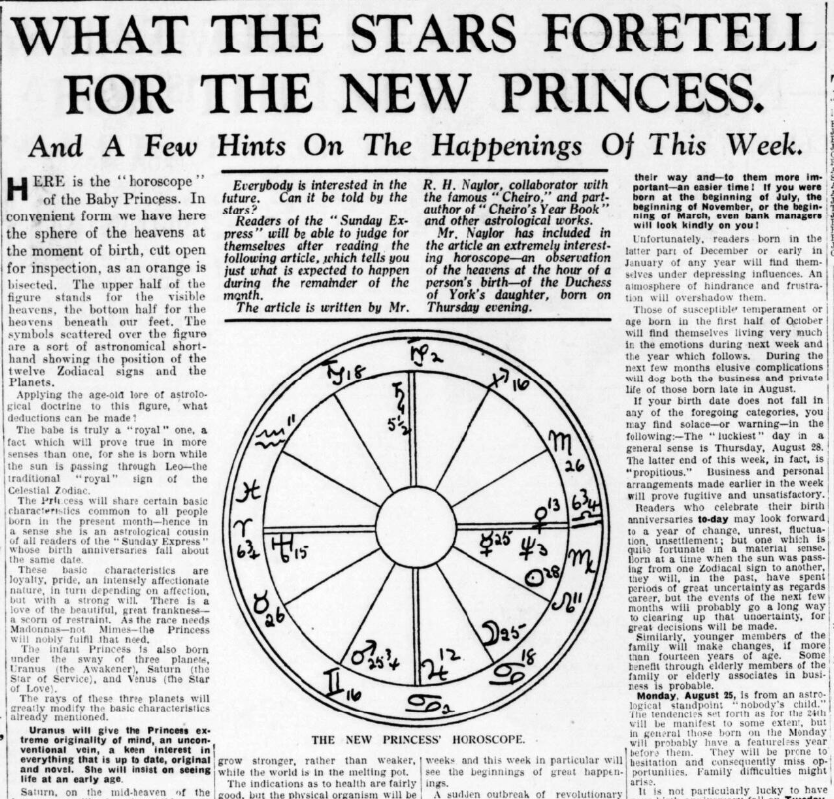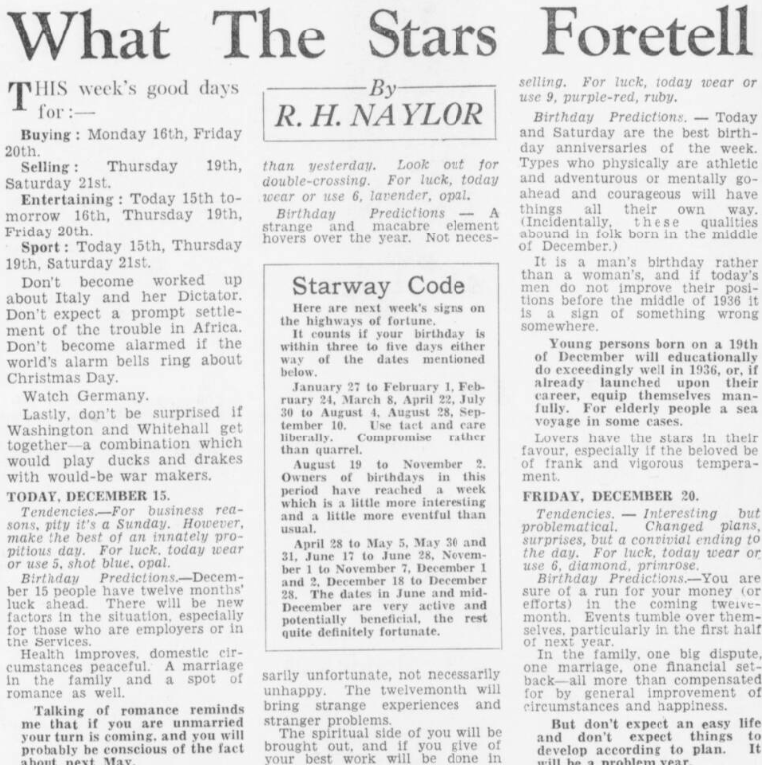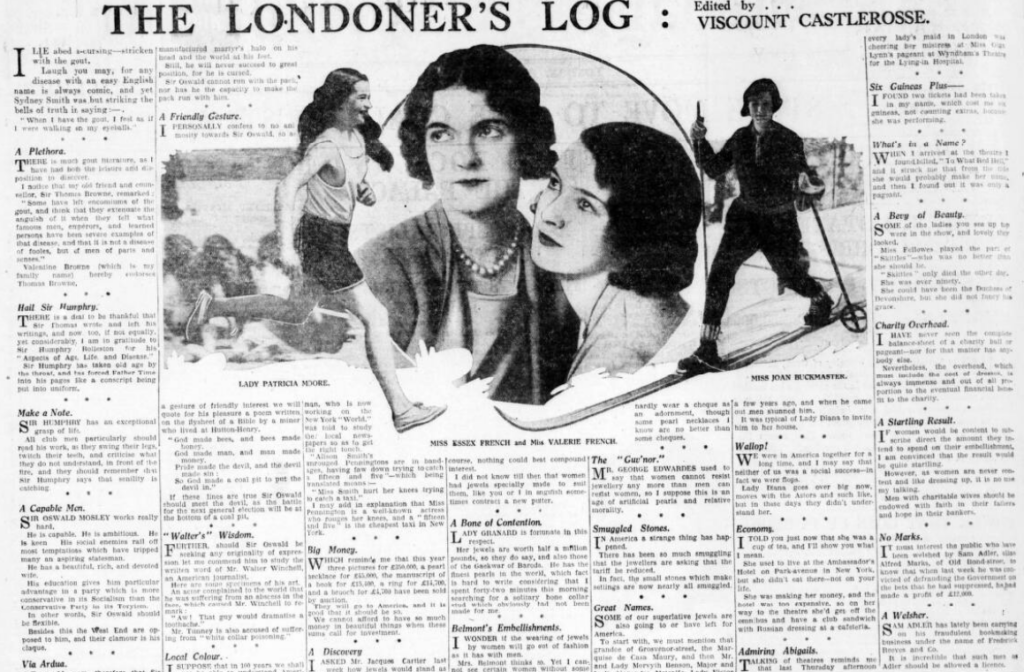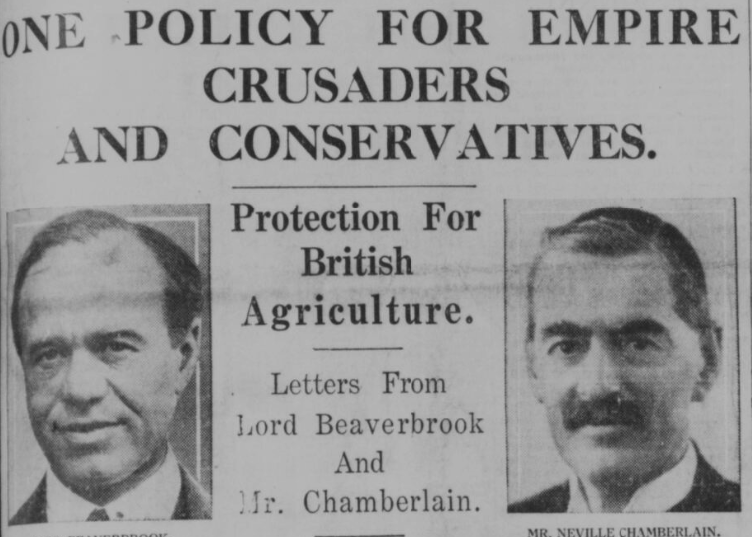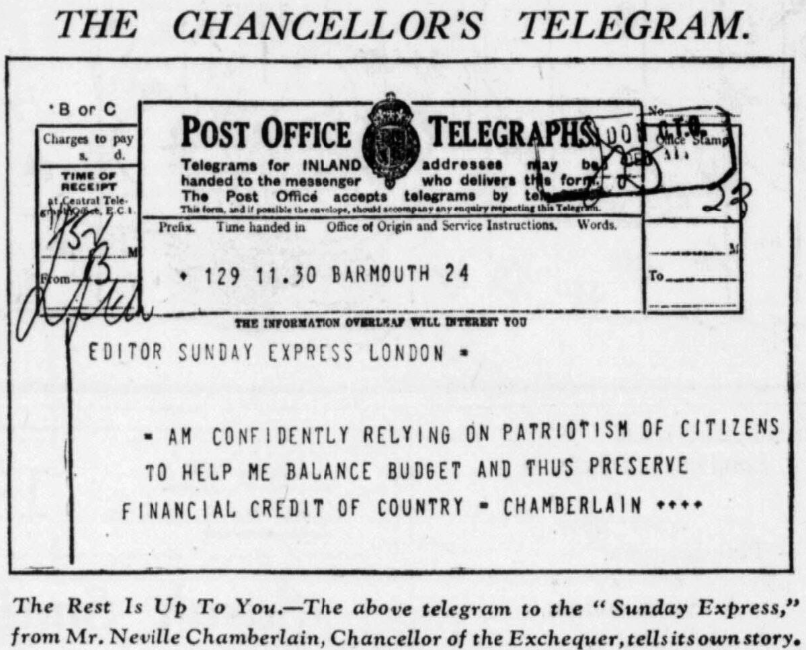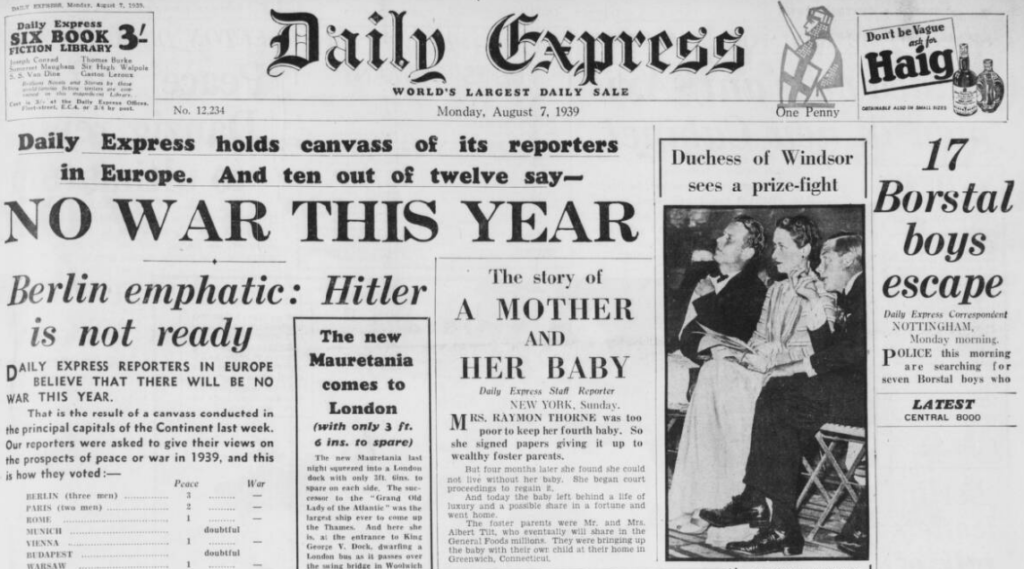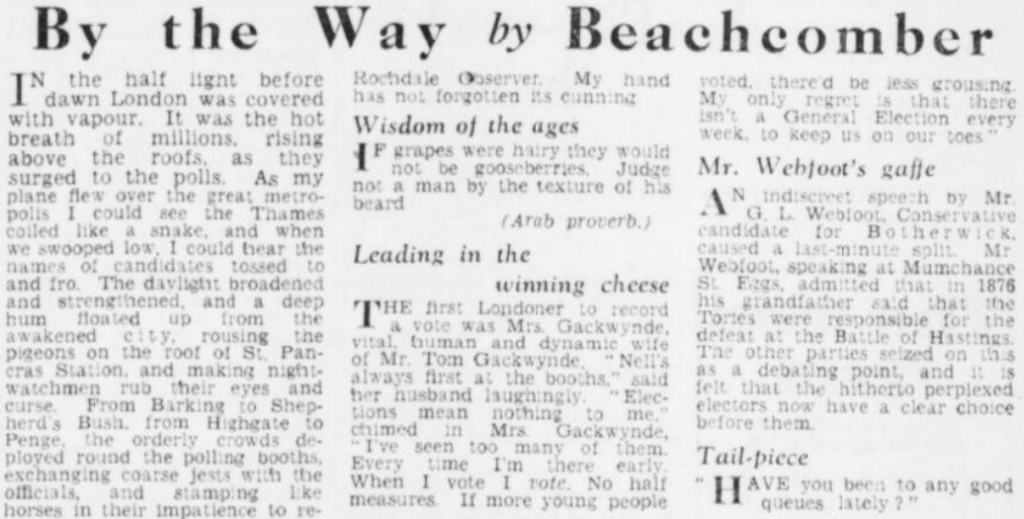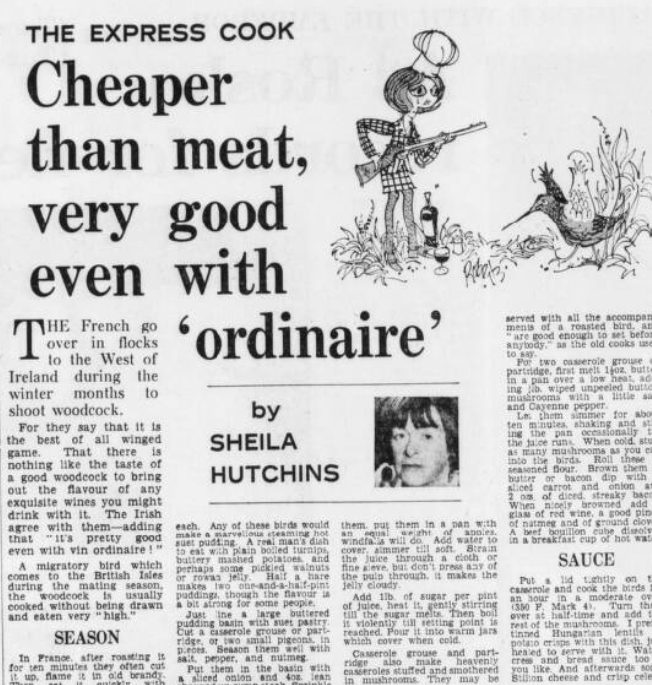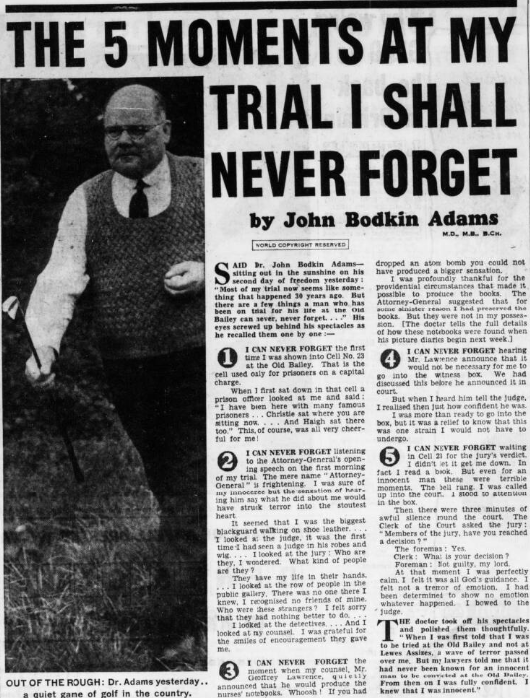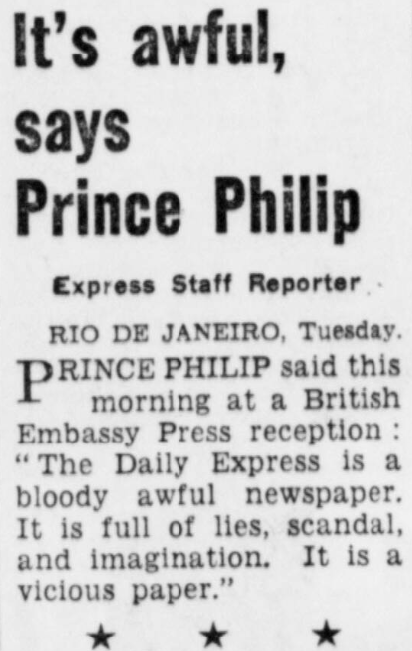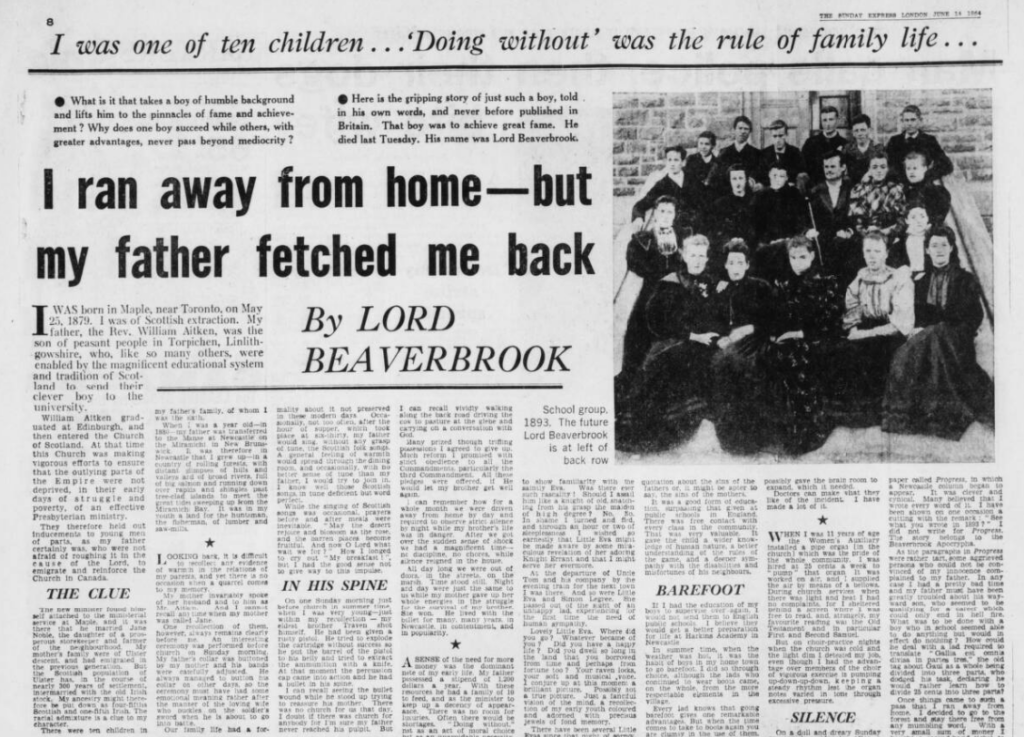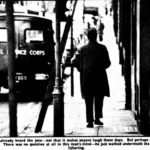This week at The Archive we have two very special new additions – national papers the Daily Express and the Sunday Express. We are delighted to host these two very special papers right from their inaugural editions all the way up to 1999, with the two newspapers numbering over 800,000 new pages between them. In all, we have added 823,327 new pages to The Archive this week, with updates also to Sussex title the Eastbourne Gazette.
So read on to discover more about the history of the Daily Express and the Sunday Express, which involves a raft of newspaper firsts, extraordinary characters and just a dose or two of controversary.
Register now and explore the Archive
The Early Years of the Daily Express
The first issue of the Daily Express appeared on 24 April 1900. The brainchild of journalist and publisher Sir Arthur Pearson (1866-1921), who had begun his career writing for the George Newnes publication Tit-Bits and went on to establish his own publishing business in 1890, the Daily Express was an exciting new venture.
Some of the excitement of this new venture can be summed up by early columns by adventurer Hesketh Hesketh-Prichard (1876-1922). In 1900, Sir Arthur Pearson sent the adventurer and explorer Hesketh-Prichard to Patagonia, in order to learn more about reports of a giant hairy mammal roaming the forests there. Reputedly the long-extinct ground sloth, Hesketh-Prichard’s stories of his travels through Patagonia in search of the mammal gripped readers.
These stories of adventure summed up the Daily Express’s new fresh approach: it was one of the first papers to place news on its front page, whilst also prioritising sport, gossip and women’s interest pieces.
The Great War and Sale to Lord Beaverbrook
Throughout the years the Daily Express would endeavour to cover foreign affairs as thoroughly as possible. The outbreak of the First World War in August 1914 provided such an opportunity, and Daily Express war correspondent Percival Phillips (1877-1937) would win plaudits for his reporting on the conflict.
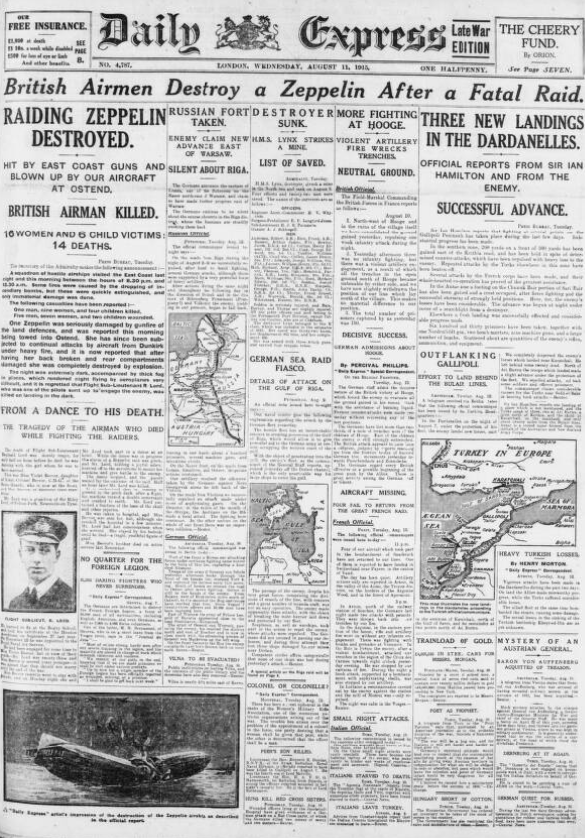
Born in Brownsville, Pennsylvania, Phillips crossed the pond in 1901 and begun working for the Daily Express. There, he reported on a range of events from across the globe: from the devastating Jamaican earthquake in 1907 to revolutions in Catalonia in 1909, and in Portugal in 1910.
In August 1914 Phillips would take on the most important brief of his life. He travelled to Belgium and was attached to the Belgian Army, and in 1915 he became just one of five journalists selected by the British government to report from the Western Front. Phillips was later honoured with a knighthood for his work.
Whilst such huge global events were at play, Sir Arthur Pearson, who had lost his sight in 1913 due to glaucoma, sold his paper to British-Canadian newspaper publisher and politician Lord Beaverbrook (1879-1964). The Beaverbrook years would propel the Daily Express to new heights, and cement its appeal to a mass, predominately right-wing, readership.
The Birth of the Sunday Express
Sensing the nation needed a boost following the end of the First World War, Lord Beaverbrook launched the Sunday Express on 29 December 1918. With a particular penchant for gossip and showbusiness, the new title was edited by James Douglas (1867-1940).
Douglas was known for his support of censorship in the publishing world, and in particular, for his support of the censorship of the Radclyffe Hall work The Well of Loneliness, a ground-breaking work in lesbian literature.
Douglas was later replaced as editor by Scottish journalist John Gordon (1890-1974), who would take the Sunday Express to its next level of popularity.
A Decade of Firsts
During the 1920s the Daily Express and the Sunday Express were home to some important firsts in the realm of publishing.
On 8 November 1920 the first ever Rupert Bear cartoon appeared in the Daily Express. The recognisable character was created by Herbert Tourtel (1874-1931), and illustrated by his wife Mary Tourtel (1874-1948). The enduringly popular cartoon series was intended to draw readers away from the Daily Mirror and Daily Mail, and Rupert still appears in the Daily Express to this day.
Meanwhile, in 1924, the Daily Express became the first newspaper to host a crossword puzzle. The first crossword puzzle had been published in an American paper in 1913, and the trend took a little while to cross the Atlantic, where it was embraced by the Daily Express and its sister paper the Sunday Express, which became the first Sunday newspaper to publish a crossword.
Enter the Horoscope
Another first achieved by the Sunday Express was the introduction of a regular horoscope column. Editor John Gordon, during the period he shared the editor position with James Douglas, had invited astrologer R.H. Naylor (1889-1952) to write a horoscope for Princess Margaret three days after her birth.
This proved such a success, that Gordon invited Naylor to write a regular horoscope column. Through his column, Naylor expounded his twelve sun sign system, which based horoscopes on readers’ birth dates, the system of astrology we are familiar with today.
Gordon’s tenure at the Sunday Express proved to be an immensely successful one. He raised circulation of the paper from 450,000 copies in 1928 to 3.2 million in 1952, thanks in part to the trailblazing horoscope columns, and contributions from the likes of Valentine Browne (Lord Castlerosse), who penned the popular gossip column ‘Londoner’s Log.’
The Beaverbrook Effect
During the 1930s the Daily Express would see the huge growth that would propel it to becoming the largest-circulating newspaper in the world. Part of its success was due to editor Arthur Christiansen (1904-1963). Appointed in 1932, his aggressive marketing campaigns, and direct appeal to the Conservative working class through patriotic editorials and news, helped to lift the paper’s sales from two million in 1936 to four million in 1949.
Meanwhile, as circulation of the Daily Express grew, so did the power of its owner, William Maxwell Aitken, or Lord Beaverbrook. Widely considered as the first press baron of Fleet Street, he often used the Daily Express and the Sunday Express as a mouthpiece, supporting, for example, tariff reform and the governments of Stanley Baldwin and Neville Chamberlain.
With Christiansen and Beaverbrook working together, the Daily Express became known for its witty, optimistic style, all the while challenging newspaper norms by printing dramatic and appealing photo layouts.
‘No More War’
On 7 August 1939, with the clouds of war hovering over Europe, the Daily Express printed its now infamous headline ‘No War This Year.’ The paper’s optimism, of course, did not pan out, and its owner stepped into new political power.
His platform coming from the Daily Express, Lord Beaverbrook was made Minister of Aircraft Production in 1940, then becoming Minister of Supply and finally Minister of War Production for a brief spell, before ill-health caused him to resign.
Meanwhile, paper shortages during the conflict meant that the Daily Express had to be shortened to just four pages. This didn’t stop innovation and creativity, however. On 3 October 1943 the Sunday Express published its first cartoon by Carl Giles (1919-1995), the cartoonist simply known as Giles. Whilst Giles himself did not agree with the politics of the paper he drew for, he created relatable cartoons around the news of the day, masterfully narrating British attitudes.
Giles would work for the Sunday Express until 1991, winning fans amongst celebrated peers like Margot Fonteyn, Spike Milligan, Sean Connery, Frank Sinatra, and Tommy Cooper.
Characters of the Express
Contributing to the Daily Express’s and Sunday Express’s heyday were a whole raft of talented writers. For example, John Cameron Andrieu Bingham Michael Morton (1893-1979), also known as J.B. Morton, wrote a humorous column for the Daily Express called ‘By the Way.’ Under the pen name ‘Beachcomber,’ Morton conducted the column from 1924 to 1975. A true character, Morton’s column was filled with humour, returning characters and impassioned rants on a variety of topics. Indeed, he was known for laughing and dancing when he finished each paragraph.
Writing for the Sunday Express, meanwhile, was Veronica Papworth (1913-1992). A journalist and illustrator, she wrote for the women’s column of the Sunday Express from the 1950s through to the 1970s. Alongside her writing, she would also feature her own illustrations.
Another key figure at the Express was Sheila Hutchins (1913-1990). Hutchins was the Cookery Editor of the Daily Express, and she was known for her witty and anecdotal style.
‘A Bloody Awful Newspaper’
The Daily Express and indeed the Sunday Express were not immune from scandal. In 1956 journalist Percy Hoskins defended suspected serial killer John Bodkin Adams, against a tide of opinion elsewhere in the press.
In 1954 editorship of the Sunday Express was taken over by Scottish journalist John Junor (1919-1997), who would edit the paper for another 32 years. Deliberately provocative with his opinions, he penned his own column ‘JJ’ in a ‘man-of-the-people’ style, becoming well known for his ‘pass the sick-bag, Alice‘ catchphrase. In 1957 Junor became the last non-politician to be called in front of parliament for contempt of parliament, following an article he had written about petrol allocation during the Suez Canal crisis.
Meanwhile in 1962 Lord Beaverbrook himself faced censure in the House of Commons, when he was accused of running a ‘sustained vendetta’ through the Daily Express against the Royal Family. The Duke of Edinburgh famously declared how the Daily Express was ‘a bloody awful newspaper. It is full of lies, scandal and imagination. It is a vicious paper.’
The Death of Lord Beaverbrook
When press baron Lord Beaverbrook passed away in 1964, sales of the Daily Express began to fall. Circulation pitched below four million copies in 1967, then three million copies in 1975, and finally two million copies in 1984. In 1977 the paper switched from a broadsheet to a tabloid, marking a beginning of a new era.
However, the paper continued to be a mouthpiece for a range of colourful characters, such as ‘First Lady of Fleet Street’ Jean Rook (1931-1991). A divisive figure, Rook became the women’s editor of the Daily Express in 1972 and described herself as ‘Britain’s bitchiest, best known, loved and loathed woman journalist.’ Rook herself broke new ground by becoming the highest paid woman on Fleet Street.
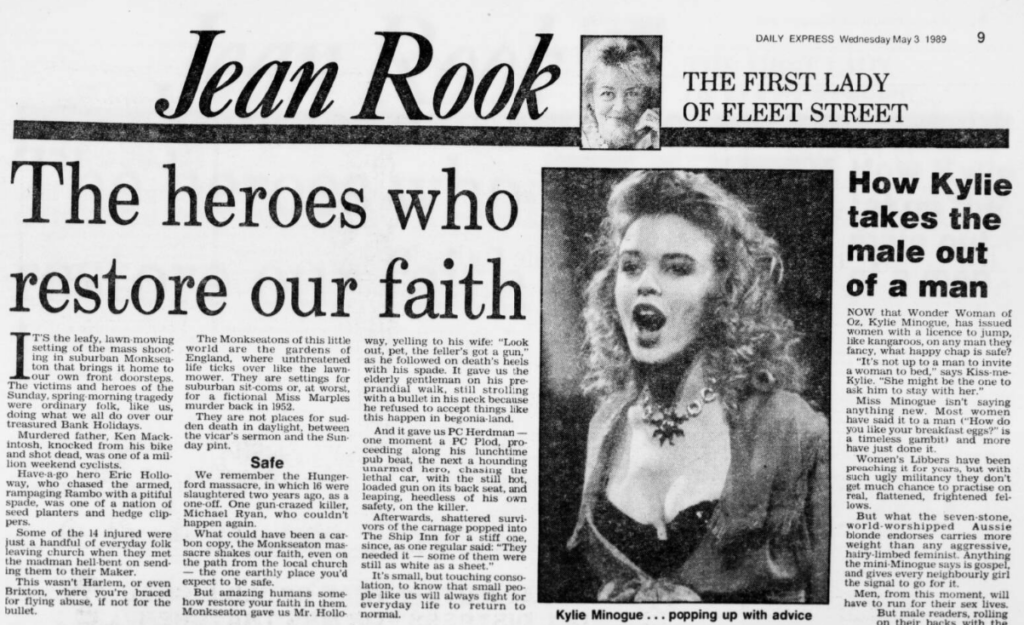
The Modern Era
In 2000 the Express newspapers were acquired by Richard Desmond (publisher of OK! magazine). During this tenure the paper saw several scandals, and continued its right-wing popularist angle. In 2018 Trinity Mirror acquired the Daily Express and Sunday Express, reflecting this acquisition by changing its name to Reach. It is Reach with whom the British Newspaper Archive and Findmypast have partnered to make publication of the Daily Express and Sunday Express possible.
We hope you enjoy browsing these two superb new additions to our collection, what stories can you uncover through their pages?
New Titles
| Title | Years Added |
| Daily Express | 1900-1999 |
| Sunday Express | 1918-1999 |
Updated Titles
This week we have updated one of our existing titles.
You can learn more about each of the titles we add to every week by clicking on their names. On each paper’s title page, you can read a free sample issue, learn more about our current holdings, and our plans for digitisation.
| Title | Years Added |
| Eastbourne Gazette | 1990 |
You can keep up to date with all the latest additions by visiting the recently added page. You can even look ahead to see what we’re going to add tomorrow.


